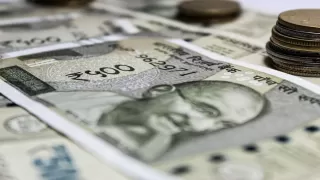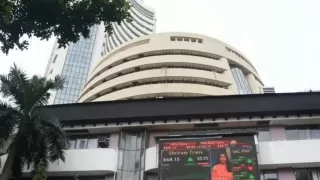Dalal Street loves rivalries. For decades, the financial markets have been shaped by clashes, whether it’s public banks vs. private banks, fintechs vs. traditional lenders, or new-age startups vs. legacy giants. But today, the latest buzz on the Street comes from the non-banking financial companies (NBFCs) space. On one side, we have HDB Financial Services, a fast-rising star fresh off a blockbuster IPO. On the other hand, we have the undisputed veteran, Bajaj Finance, a giant that has built its reputation as the king of NBFCs in India.
The big question investors, traders, and analysts are asking now:
Can HDB Financial ride the IPO momentum to chip away at Bajaj Finance’s dominance, or will the veteran remind everyone why it’s still the undefeated champion of NBFCs?
In this article, we dive deep into this clash, unpacking financials, market moves, loan growth, and stock performance to see who holds the stronger hand in 2025 and beyond.
About the Companies
HDB Financial Services isn’t exactly a newcomer; it was incorporated in 2007 and is backed by India’s top private bank, HDFC Bank. But its IPO in 2025 has given it a fresh identity on the Street. With 1,700 branches, over 19 million customers, and services ranging from asset finance, mortgages, and gold loans to consumer durable financing and even BPO operations, HDB has quickly gained recognition as one of the top NBFC players in India.
As of now, HDB commands a market capitalisation of over Rs 63,000 crore, no small feat for a company that’s just stepped into the secondary markets.
On the other side is Bajaj Finance, synonymous with NBFC leadership in India. With over 106 million customers, a massive 4,263 branch network, and a diversified lending portfolio spanning retail, SME, rural, and commercial finance, Bajaj is the name most Indians associate with easy EMIs and consumer credit. Its subsidiaries, Bajaj Housing Finance and Bajaj Financial Securities, make it a true financial powerhouse.
Its market capitalisation? A whopping Rs 5.33 lakh crore, nearly 8x bigger than HDB Financial.
So, we have a classic matchup: David vs. Goliath, or in Dalal Street terms, a new listing vs. a market veteran.
Financial Performance
Financials often decide market battles, and here’s where the contrasts begin.
- HDB Financial (Q1 FY26):
- Net Profit: Rs 568 crore (↓2% YoY from Rs 582 crore)
- Net Profit Margin: 12.72% (down from 14.98%)
- IPO: Listed at a 13% premium over issue price of Rs 740, but stock down nearly 10% since debut.
- Bajaj Finance (Q1 FY26):
- Net Profit: Rs 2,789 crore (↑30.5% YoY)
- Sequential Growth: ↑15%
- A five-year rally of 157% in stock value.
Bajaj Finance is flexing its muscle here. While HDB is profitable and growing, Bajaj’s consistent profit growth gives it a clear edge.
Net Interest Margins (NIM)
The NIM (Net Interest Margin) reflects how efficiently a lender earns from its loan book.
- HDB Financial: Reported 7.7% NIM in Q1 FY26, slightly better than the previous quarter (7.6%).
- Bajaj Finance: Reported 5.29% NIM, which may look lower, but its scale of operations makes this a powerhouse figure.
HDB edges ahead in NIM percentage, but Bajaj’s spread across multiple segments balances the score.
NPAs & Asset Quality
For NBFCs, asset quality is the ultimate truth.
- HDB Financial:
- Gross NPAs: 2.56% of total advances (vs. 1.93% YoY).
- Net NPAs: 1.11% (up from 0.77%).
- Slippages: Notable in Commercial Vehicle (CV) and Unsecured Loan (USL) segments.
- Bajaj Finance:
- Gross NPAs: 1.03% (vs. 0.86% YoY).
- Net NPAs: 0.50% (vs. 0.38%).
- Stress seen in MSME, Auto Finance, and Rural Unsecured loans. Subsidiary Bajaj Housing Finance maintained NPAs at just 0.30%.
Bajaj has stronger asset quality. HDB’s rising NPAs raise red flags for long-term investors.
Loan Growth
Loan growth is the fuel for NBFCs.
- HDB Financial:
- Loan Book: Rs 1.09 lakh crore, ↑14.3% YoY.
- Enterprise Lending: 38.7%
- Asset Finance: 37.8%
- Consumer Finance: 23.5%
- Disbursements dipped 8.09% YoY to Rs 15,171 crore.
- Bajaj Finance:
- New Loans: 13.49 million disbursed (↑23% YoY).
- Customer Base: ↑ to 106.51 million.
- AUM: Rs 4.41 lakh crore (↑25% YoY).
- Subsidiaries: Bajaj Housing Finance loan book ↑24% YoY; Bajaj Financial Securities profit ↑37%.
Bajaj is still growing faster, both in disbursements and scale. HDB’s dip in disbursements is a concern despite portfolio expansion.
Stock Market Race
- HDB Financial:
- Listed at Rs 835/share (↑12.8% from IPO price).
- Down nearly 9–10% since listing.
- Current investor sentiment: cautious.
- Bajaj Finance:
- Short-term weakness: stock down 6% in the past month.
- Long-term strength:
- ↑2% in last 6 months
- ↑33% in last year
- ↑157% in 5 years
- 52-week range: Rs 642.50 – Rs 978.80.
Bajaj Finance is a proven long-term wealth creator. HDB’s IPO buzz has cooled, signalling the need for consistent performance.
HDB vs Bajaj Finance: Key Takeaways
- Scale: Bajaj Finance is nearly 8x bigger in market cap.
- Profitability: Bajaj’s 30% YoY growth far outpaces HDB’s slight profit dip.
- NIM: HDB’s 7.7% is higher, but Bajaj balances with diversified operations.
- Asset Quality: Bajaj has better control over NPAs.
- Stock Performance: Bajaj’s long-term returns outshine HDB’s short-term struggles.
Why Investors Are Interested?
This rivalry is entertaining for Dalal Street watchers because it blends fresh excitement with proven legacy. Think of it like Bollywood’s new-age stars challenging the Khans, HDB has the energy and IPO glamour, but Bajaj has decades of box-office hits.
Every quarterly result feels like a new episode of a financial thriller. Investors, analysts, and retail traders are constantly comparing numbers, much like fans debate who’s the bigger superstar.
For HDB Financial:
- The focus must shift from IPO buzz to consistent quarterly growth.
- Asset quality needs urgent attention to avoid slipping further.
- Expansion in disbursements and customer acquisition will be key.
For Bajaj Finance:
- The challenge is to maintain momentum amid rising competition.
- Asset stress in MSMEs and Auto Finance must be carefully managed.
- Innovation in digital lending and fintech partnerships can secure future dominance.
As of now, Bajaj Finance remains the undisputed king of NBFCs. Its scale, profitability, and long-term stock market performance make it a safer bet for investors.
However, HDB Financial is not to be ignored. With the backing of HDFC Bank, a strong branch network, and high NIMs, it could evolve into a formidable challenger in the next 5-7 years.
For investors, the battle of HDB Financial vs Bajaj Finance is less about choosing one and more about watching how this financial soap opera unfolds.
Also Read: Top Stock Market Terms Beginners Must Know to Trade Like a Pro




























